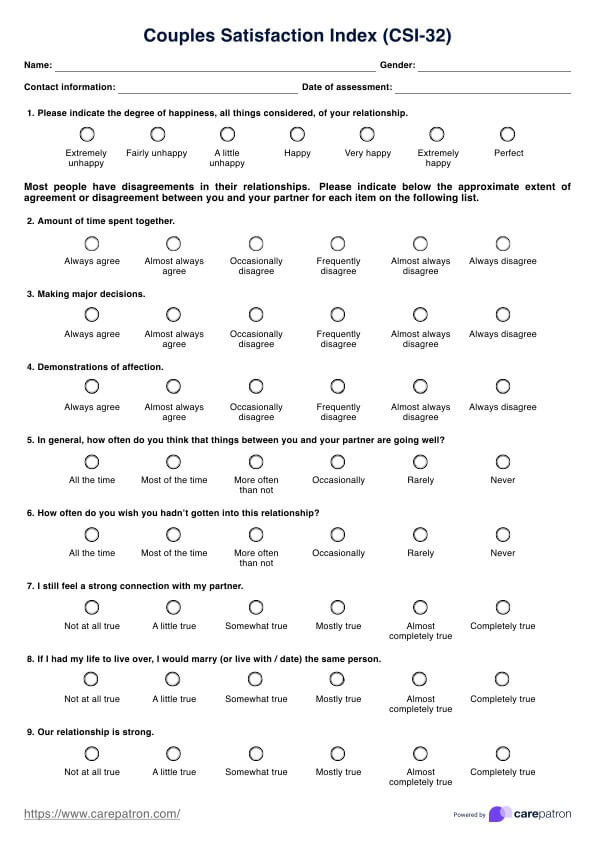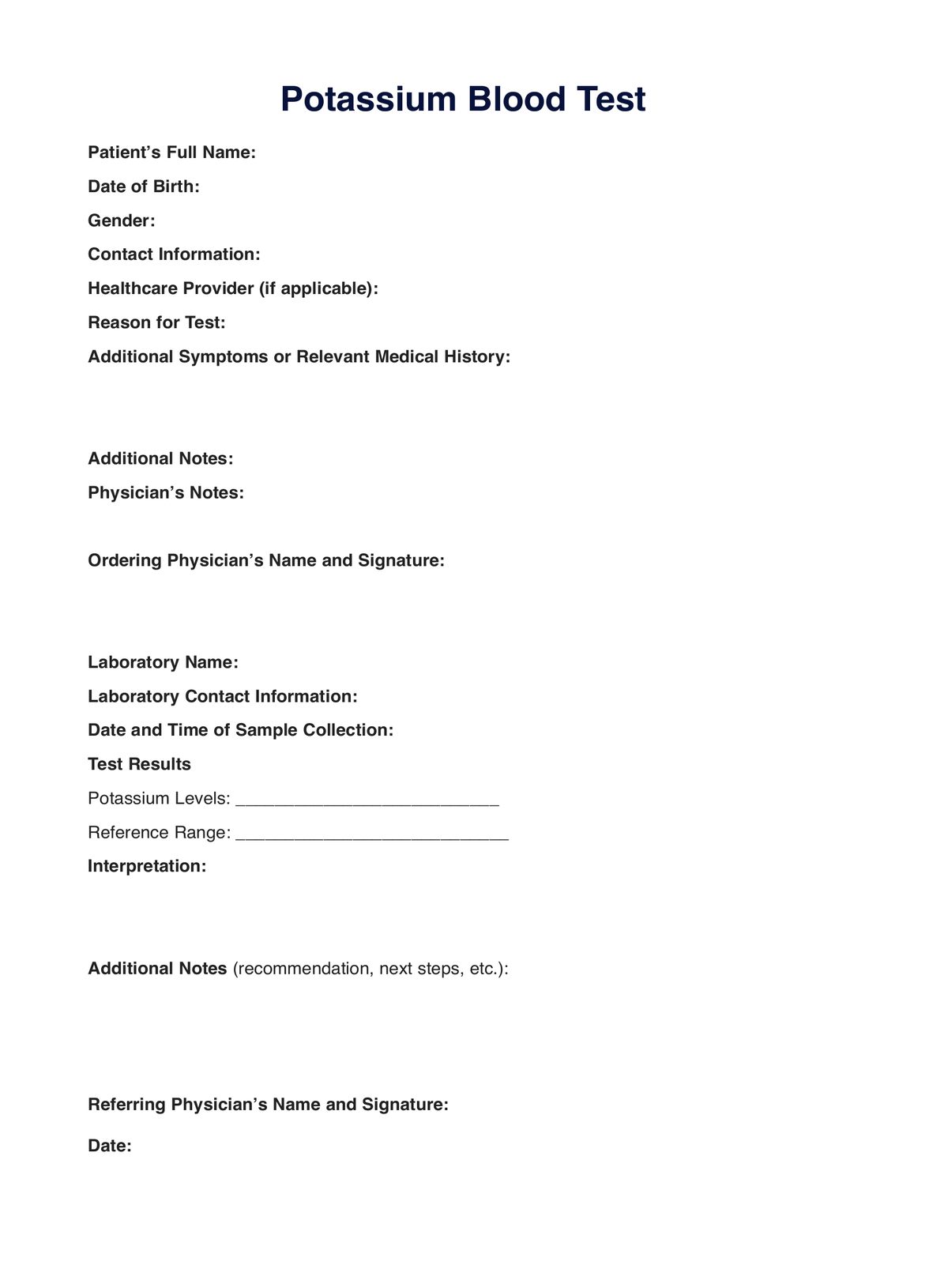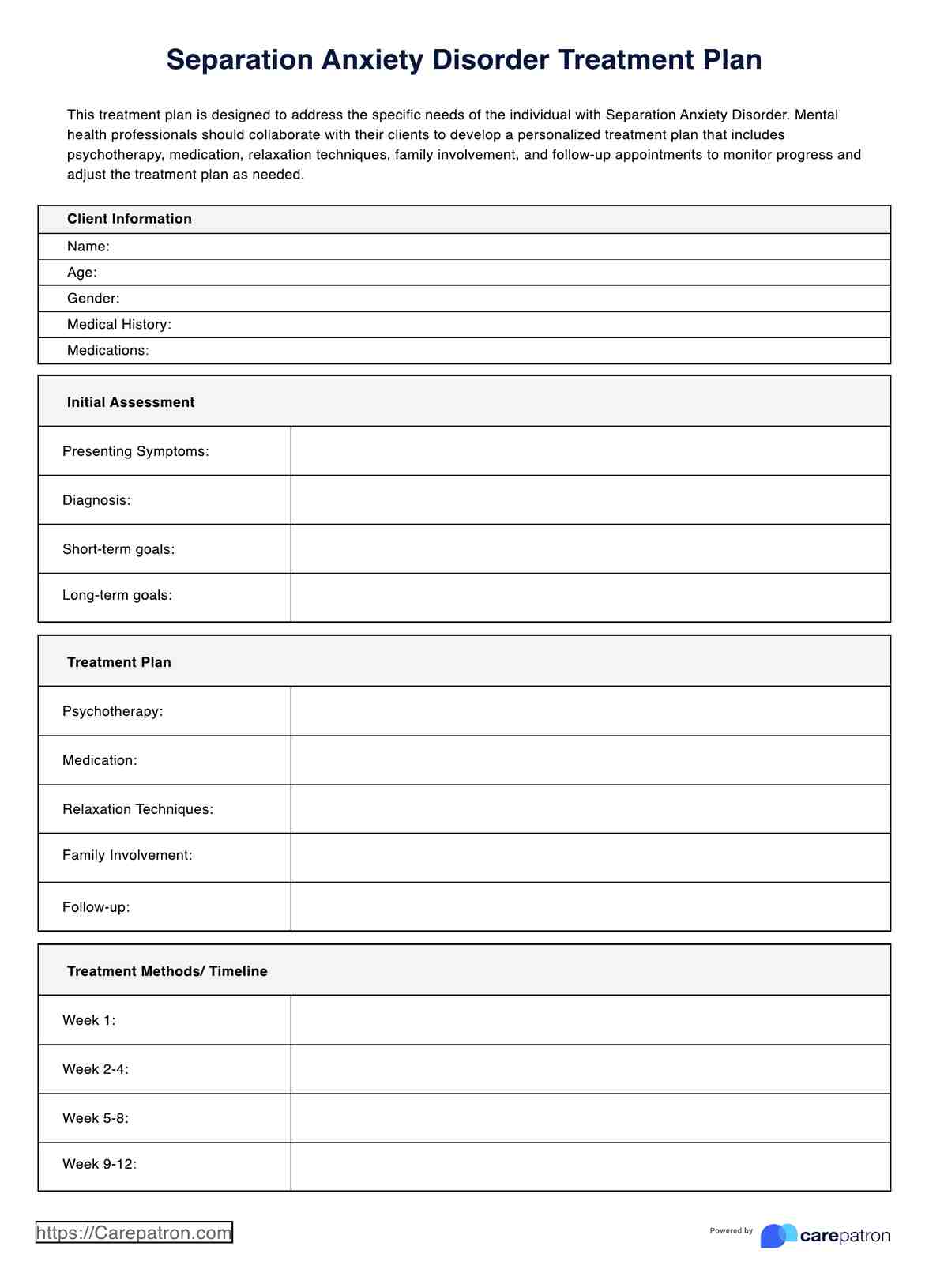Barratt Impulsiveness Scale (BIS-11)
Discover how the Barratt Impulsiveness Scale (BIS-11) can help evaluate impulsivity in your practice. Carepatron offers it for efficient patient management.


What is Impulsiveness?
Impulsiveness is a multifaceted psychological concept generally characterized by an inclination to act hastily without thoughtful deliberation or an assessment of potential consequences. It's an attribute that can give rise to behaviors perceived as rash, impulsive, or even reckless.
can reveal itself in an array of ways. For some, it may mean making on-the-spot decisions without thorough contemplation; for others, it could translate to indulging in risk-oriented activities. A few individuals might exhibit impulsiveness in the form of difficulty waiting for their turn or exercising patience.
Though impulsiveness is a normal aspect of human behavior, it's essential to note that it may signify certain psychological conditions when it becomes a chronic pattern that negatively influences daily life. Such situations can be better understood and managed using sophisticated tools like electronic health records, which can help keep track of behavioral patterns and provide valuable insights for treatment plans.
While impulsiveness can be challenging, not all impulsive behavior is harmful. It can sometimes lead to creative problem-solving or prompt, decisive action when necessary. Nevertheless, understanding this behavior and its impact on one's life is vital for overall mental health.
Looking for other Impulsive Behavior Resources? Check out this video:
Barratt Impulsiveness Scale (BIS-11) Template
Barratt Impulsiveness Scale (BIS-11) Example
How to Use the Barratt Impulsiveness Scale
The Barratt Impulsiveness Scale (BIS-11) is a widely recognized self-reported assessment that provides a granular understanding of impulsivity, allowing researchers and clinicians to evaluate impulsive behaviors more accurately.
Step 1: Grasping the Barratt Impulsiveness Scale
The BIS-11 comprises a set of 30 items, each providing a unique lens into an individual's impulsive behavior. The subject rates each item on a 4-point scale, with higher scores directly reflecting greater levels of impulsiveness. Understanding the scoring system is crucial to interpret the results accurately.
Step 2: Administering the Assessment
The printable Barratt Impulsiveness Scale (BIS-11) is typically administered under the supervision of a qualified healthcare professional. This ensures that the individual understands the questions correctly and responds honestly. As a self-report measure, the individual must answer each question with as much truthfulness as possible to ensure the most accurate results.
Step 3: Scoring and Interpretation
Each response on the BIS-11 is scored from 1 to 4, with the cumulative score providing an overall measure of impulsivity. A healthcare professional or researcher typically interprets these scores, examining patterns within the responses to gain a more nuanced understanding of the individual's impulsivity. This overall measure can be instrumental in identifying possible impulsive tendencies and informing therapeutic approaches or psychological interventions.
Through these three easy steps, the Barratt Impulsiveness Scale (BIS-11) can provide valuable insights into an individual's impulsiveness, significantly contributing to the understanding and managing behaviors associated with impulsivity.
When Would You Use this Barratt Impulsiveness Scale Template?
The Barratt Impulsiveness Scale (BIS-11) template is a valuable instrument in several clinical and research settings. The decision to administer this tool typically arises when a healthcare professional, such as a psychologist, psychiatrist, or clinical social worker, identifies signs of impulsive behavior in a client or patient.
In many cases, the Barratt Impulsiveness Scale template is used as part of a comprehensive evaluation process for disorders in which impulsivity plays a significant role.
For instance, Attention Deficit Hyperactivity Disorder (ADHD) is one such condition where impulsive actions are a predominant symptom. Other disorders, like certain personality disorders, including borderline or antisocial personality disorder, also feature impulsivity as a central characteristic. The BIS-11 aids in identifying the extent of these impulsive behaviors, thereby facilitating an accurate diagnosis and an effective treatment plan.
Additionally, the template can be used in therapeutic settings to monitor the progress of individuals undergoing treatment for these conditions. Changes in impulsivity scores over time can provide an objective measure of improvement or indicate areas that may require further therapeutic focus.
This assessment tool can also be valuable in research scenarios. Scholars studying impulsivity as a personality trait or investigating its role in various psychological disorders can employ the Barratt Impulsiveness Scale template to gather quantitative data on impulsivity.
However, it's crucial to remember that this assessment should be administered as part of a more comprehensive diagnostic process, not in isolation. The BIS-11 provides meaningful insights into an individual's impulsive tendencies, but a holistic understanding of the individual's mental health should always incorporate multiple sources of information and assessment tools.
What are the Benefits of Using this Barratt Impulsiveness Scale (BIS-11)?
Proven Efficacy
The BIS-11 has been widely used and recognized as a psychometric tool for its efficiency in measuring impulsivity. Research studies consistently indicate that it offers valid and reliable scores, contributing to its popularity among healthcare professionals.
Comprehensive Evaluation
The Barratt Impulsiveness Scale probes multiple dimensions of impulsive behavior, enabling a holistic view of the individual's tendencies. Rather than offering a singular view, it considers various aspects, including attentional, motor, and non-planning impulsivity. This multi-faceted approach provides a more nuanced understanding of the individual's impulsivity, which can be invaluable for therapeutic planning.
Extensive Research Support
The BIS-11 has a strong research foundation, which increases its credibility and effectiveness. Several scholarly studies have supported using the BIS-11 in various settings, from clinical practice to research investigations. For instance, the scale has been proven effective in differentiating between clinical populations with impulsivity-related disorders, validating its use in these contexts.
Accessibility
The free Barratt Impulsiveness Scale is easily accessible to healthcare professionals. It is readily available in various settings, contributing to its widespread application. The ease of access ensures that the tool can be readily incorporated into assessment processes, aiding healthcare professionals in evaluating and treating impulsive behavior effectively.
The BIS-11 is a valuable tool in the assessment and understanding of impulsivity.
Commonly asked questions
The BIS-11 typically takes about 10 minutes to complete.
Higher scores on the BIS-11 indicate higher levels of impulsivity. A healthcare professional should interpret.
The BIS-11 is often used when assessing for disorders characterized by impulsivity, such as ADHD.
The BIS-11 can be administered by psychologists, psychiatrists, therapists, and other mental health professionals.

.jpg)
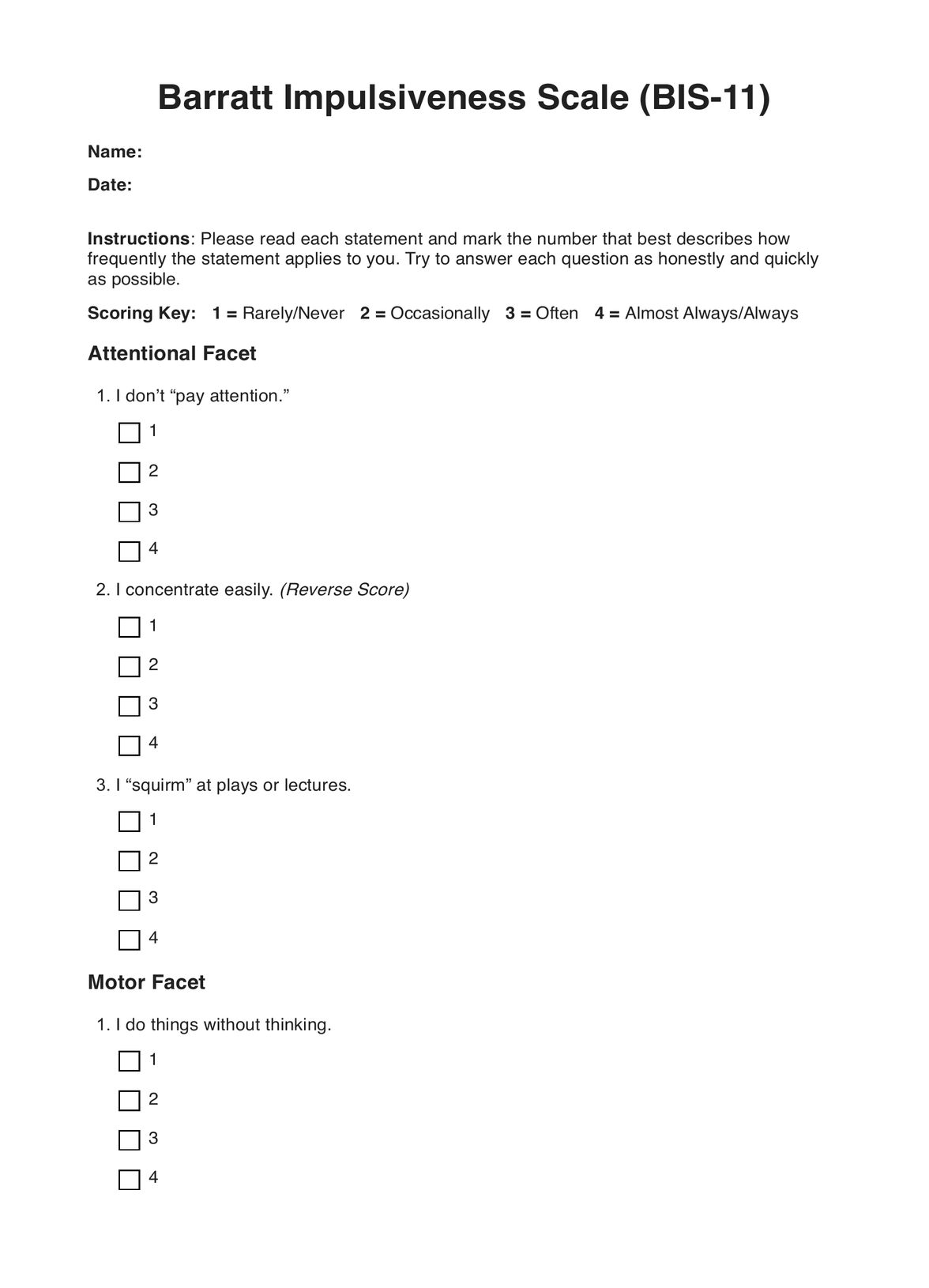
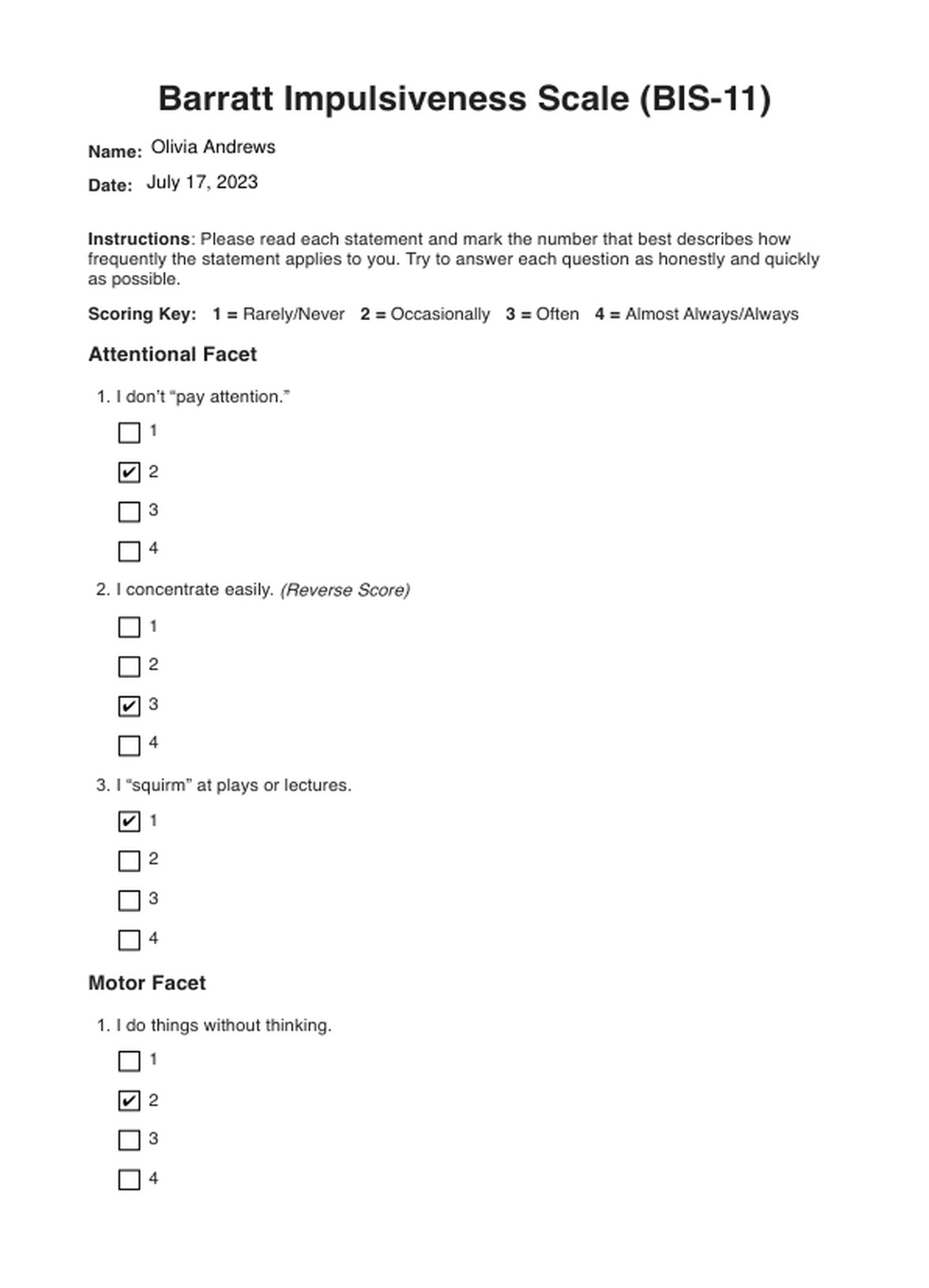













-template.jpg)
















































































